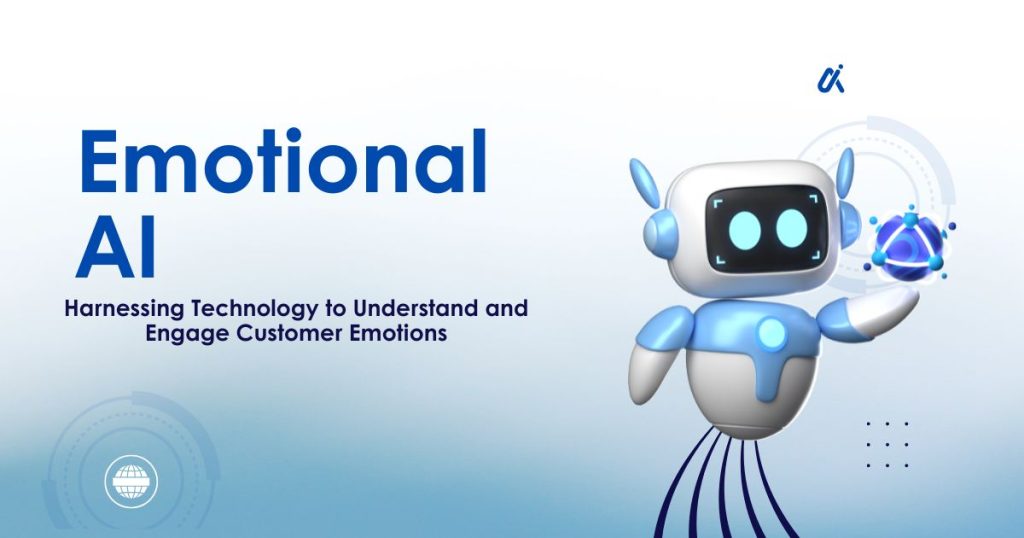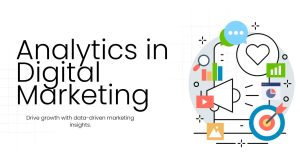How Emotional AI is Revolutionizing Marketing Forever

Emotional AI helps brands understand customer emotions to personalize experiences, improve campaigns, and boost loyalty—ethically and in real-time.
Marketing has always been about understanding people. But what if technology could read human emotions better than we can ourselves? Emotional AI—artificial intelligence that recognizes, interprets, and responds to human emotions—is transforming how brands connect with their audiences.
This emerging technology analyzes facial expressions, voice patterns, text sentiment, and physiological signals to decode emotional states in real-time. For marketers, this represents a seismic shift from guessing what customers feel to knowing exactly how they respond to campaigns, products, and brand interactions.
The implications are staggering. Brands can now personalize experiences based on emotional context, predict customer behavior with unprecedented accuracy, and create campaigns that resonate on a deeper psychological level. As emotional AI becomes more sophisticated and accessible, it’s reshaping the entire marketing landscape.
What Makes Emotional AI Different from Traditional Analytics

Traditional marketing analytics tell you what happened—clicks, conversions, time on page. Emotional AI reveals why it happened by measuring the feelings behind those actions.
Standard sentiment analysis tools scan text for positive or negative keywords. Emotional AI goes deeper, detecting subtle emotional nuances like frustration masked by polite language, excitement hidden in formal communication, or anxiety underlying purchase hesitation.
The technology works across multiple channels simultaneously. While a customer service chatbot analyzes typed responses for emotional indicators, the same system might evaluate voice tone during phone calls or facial expressions during video interactions. This comprehensive emotional mapping creates a 360-degree view of customer experience.
Modern emotional AI systems can distinguish between primary emotions (joy, anger, fear, surprise) and complex emotional states (anticipation mixed with anxiety, or satisfaction tinged with disappointment). This granular understanding enables marketers to craft responses that address the full emotional spectrum of customer interactions.
The Science Behind Reading Digital Emotions
Emotional AI relies on multiple detection methods, each capturing different aspects of human emotional expression. Computer vision algorithms analyze facial micro-expressions, tracking minute muscle movements that reveal true feelings even when people try to conceal them.
Voice emotion recognition examines acoustic features—pitch variation, speaking rate, pause patterns, and vocal stress indicators. These vocal biomarkers often reveal emotions more accurately than the actual words spoken, particularly in customer service contexts where people may choose their words carefully.
Text-based emotional analysis has evolved beyond simple keyword matching. Advanced natural language processing models understand context, cultural nuances, and implicit emotional cues. They recognize when “fine” actually means frustrated or when excessive politeness signals underlying dissatisfaction. Explore the psychology behind emotional marketing.
Physiological monitoring adds another layer through wearable devices and biometric sensors. Heart rate variability, skin conductance, and even eye movement patterns provide objective emotional data that complements other detection methods.
Transforming Customer Experience Through Emotional Intelligence

Brands are using emotional AI to create adaptive experiences that respond to customer moods in real-time. E-commerce platforms adjust product recommendations based on detected emotional states—showing comfort items to stressed visitors or luxury products to those expressing excitement. Check out how emotion-based marketing wins hearts.
Customer service applications represent the most immediate implementation. AI-powered chatbots can detect frustration in customer messages and automatically escalate to human agents, or adjust their communication style to match the customer’s emotional needs. This emotional awareness dramatically improves resolution rates and customer satisfaction.
Dynamic content personalization takes marketing beyond demographic targeting. Websites can modify their visual design, messaging tone, and product presentation based on visitor emotional profiles. A stressed user might see calming colors and reassuring copy, while an excited visitor encounters bold visuals and dynamic content.
Email marketing campaigns now incorporate emotional timing optimization. By analyzing when recipients are most emotionally receptive—detected through previous engagement patterns and emotional responses—brands can significantly improve open rates and conversion performance.
Real-World Applications Driving Results

Netflix uses emotional AI to refine its recommendation algorithm, analyzing viewer facial expressions during content consumption to better understand preferences beyond simple completion rates. This emotional data helps predict which shows will resonate with specific audience segments.
Automotive companies employ emotional AI in focus groups and test drives, measuring genuine emotional responses to vehicle features rather than relying solely on stated preferences. This emotional feedback influences everything from interior design to marketing messaging.
Retail brands analyze in-store customer emotions through facial recognition and movement tracking. High-end retailers can identify when shoppers feel overwhelmed and intervene with personalized assistance, while fast-fashion stores optimize store layouts based on emotional traffic patterns.
Social media platforms leverage emotional AI to improve content moderation and ad placement. By understanding the emotional context of posts and user states, platforms can better predict which advertisements will perform well and which content might require human review.
Emotional AI in Advertising Campaign Optimization
Emotional AI allows brands to optimize advertising campaigns with unprecedented precision. Traditional A/B testing relies on click-through rates or sales data, which are lagging indicators of effectiveness. Emotional AI provides real-time feedback on how viewers actually feel while engaging with ads. Learn about emotional triggers in marketing.
For example, during a video ad campaign, AI can analyze facial micro-expressions or voice reactions from focus groups to determine which scenes evoke excitement, empathy, or boredom. Marketers can then adjust visuals, music, pacing, and messaging before mass deployment.
This leads to campaigns that resonate emotionally, improve brand recall, and increase the likelihood of conversion. Over time, AI-generated insights can identify emotional triggers for specific target segments, creating hyper-personalized campaigns tailored to diverse audience profiles.
Emotional AI for Crisis Management

Emotional AI isn’t just about boosting engagement—it’s also a tool for managing brand crises. Social media crises or customer complaints can escalate quickly if not addressed appropriately. AI systems can monitor customer sentiment in real-time across multiple channels, detecting early signs of frustration, anger, or dissatisfaction.
Brands can then respond immediately, adjusting communication style to de-escalate tension and prevent negative publicity. For instance, an airline could detect rising anxiety among passengers tweeting about flight delays and deploy targeted messages offering assistance, updates, or compensation.
This proactive approach to emotional monitoring reduces reputational risks and demonstrates that brands are attentive and empathetic, strengthening long-term trust with customers.
AI systems monitor sentiment across channels, detecting early signs of frustration or dissatisfaction. Brands can then respond proactively, reducing reputational risks and demonstrating empathy. Techniques in this area are often part of broader e-commerce digital marketing strategies.
Emotional AI in Product Development
Emotional insights don’t just inform marketing—they influence product design and innovation. By analyzing customer reactions to prototypes, packaging, or feature updates, brands gain insight into what truly delights or frustrates users.
For instance, a tech company might discover that users express subtle frustration during setup of a device. This data can lead to simplifying instructions, redesigning the interface, or offering additional onboarding support. Similarly, emotional AI can help prioritize features based on which evoke positive emotions like excitement, satisfaction, or confidence.
Integrating emotional data into product development accelerates innovation cycles, ensures customer-centric design, and ultimately improves market adoption and retention rates.
Emotional AI in Omni-Channel Marketing
Consumers today interact with brands across multiple platforms—websites, social media, mobile apps, email, and even physical stores. Emotional AI enables a unified understanding of customer emotions across all touchpoints.
By tracking emotional signals across channels, brands can maintain consistent messaging and adapt content according to context. For example, a user who expresses excitement while browsing an online store might receive complementary email suggestions tailored to their emotional state, reinforcing the positive experience.
This omni-channel emotional intelligence ensures that customer interactions feel coherent, personalized, and emotionally relevant, increasing satisfaction and loyalty.
Emotional AI in Influencer and Content Marketing
Influencer marketing can also benefit from emotional AI. By analyzing audience reactions to influencer content, brands can measure emotional engagement rather than just likes or shares.
For example, a beauty brand could evaluate the emotional response of viewers to a tutorial video, determining which moments spark excitement, confidence, or curiosity. This allows brands to optimize influencer campaigns, tailor content for maximum emotional impact, and build more authentic connections with their audiences.
Additionally, content creators can use emotional AI to test headlines, video edits, or social posts, ensuring that content resonates emotionally before wide-scale distribution. The result is higher engagement rates, better brand recall, and more meaningful audience connections.
Emotional AI and Customer Loyalty Programs
Emotional AI isn’t limited to acquisition—it enhances retention and loyalty. Loyalty programs traditionally reward repeat purchases with discounts or points, but emotional AI allows brands to reward emotional engagement.
For instance, AI can detect when a customer expresses delight during a purchase, receives personalized thank-you messages, or interacts positively with brand content. Brands can then tailor rewards, exclusive offers, or surprise experiences to strengthen emotional bonds.
This approach transforms loyalty programs from transactional systems into emotionally intelligent strategies that foster long-term customer advocacy and attachment.
Privacy and Ethical Considerations
The power of emotional AI comes with significant responsibility. Collecting and analyzing emotional data raises serious privacy concerns that marketers must address transparently. Clear consent mechanisms and data usage policies become essential when dealing with such intimate information.
Emotional manipulation represents a key ethical boundary. While emotional AI can help brands better serve customer needs, using it to exploit vulnerable emotional states crosses ethical lines. Industry standards are still evolving around appropriate applications.
Data security requirements intensify when handling emotional information. Emotional profiles could be more sensitive than financial data, requiring enhanced protection measures and careful consideration of data retention policies.
Cultural sensitivity presents another challenge. Emotional expressions vary significantly across cultures, and AI systems trained on limited datasets may misinterpret emotions from underrepresented groups. Global brands must ensure their emotional AI systems account for cultural diversity.
The Future of Emotionally Intelligent Marketing
Emotional AI will become increasingly sophisticated, potentially predicting emotional states before they fully manifest. This predictive capability could enable brands to address customer needs proactively rather than reactively.
Integration with augmented and virtual reality environments will create immersive brand experiences that adapt to user emotions in real-time. Virtual showrooms could modify their atmosphere based on visitor comfort levels, while AR try-on experiences could adjust based on confidence indicators.
Cross-platform emotional continuity represents the next frontier. Imagine a customer service interaction that begins on mobile, continues on desktop, and concludes in-store, with emotional context preserved throughout the entire journey.
Voice commerce integration will become more emotionally aware, with smart speakers detecting mood and adjusting product recommendations accordingly. The technology might suggest energizing products to someone sounding tired or comfort purchases to stressed individuals.
Building Tomorrow’s Emotional Marketing Strategy
Emotional AI in marketing represents more than a technological upgrade—it’s a fundamental shift toward human-centered brand experiences. Companies that embrace this technology thoughtfully will forge deeper customer connections and drive meaningful business growth.
Success requires balancing technological capability with ethical responsibility. Brands must view emotional AI as a tool for better serving customers rather than manipulating them. Transparency, consent, and respect for emotional privacy will distinguish ethical implementations from exploitative ones.
The competitive advantage lies not just in adopting emotional AI, but in using it to create genuinely valuable experiences. Companies that focus on emotional well-being and authentic connection will build lasting customer relationships that transcend traditional marketing approaches.
Frequently Asked Questions (FAQ)
How accurate is emotional AI in detecting human emotions?
Current emotional AI systems achieve accuracy rates of 70-90% depending on the detection method and emotional complexity. Facial expression analysis tends to be most accurate for basic emotions, while text-based detection excels at sentiment analysis. Combining multiple detection methods significantly improves overall accuracy.
What data does emotional AI collect about customers?
Emotional AI typically analyzes facial expressions, voice patterns, text sentiment, response timing, and sometimes physiological signals. The specific data collected depends on the implementation—customer service chatbots might only analyze text, while retail applications could include facial recognition data.
How do companies ensure emotional AI complies with privacy regulations?
Companies implement consent mechanisms, data anonymization, and transparent privacy policies. Many emotional AI applications process data locally rather than storing it centrally, and some use aggregate emotional insights rather than individual profiles to maintain privacy while gaining business value.
Can customers opt out of emotional AI analysis?
Most implementations allow opt-out options, though the process varies by company and application. Some platforms provide granular controls, letting customers choose which emotional analysis features to enable, while others offer complete opt-out mechanisms.
How does emotional AI handle cultural differences in emotional expression?
Advanced emotional AI systems train on diverse, culturally representative datasets and can adapt their analysis based on user demographics or self-reported cultural background. However, this remains an active area of development, and companies must continually refine their systems to avoid cultural bias.
How reliable is emotional AI in interpreting customer emotions?
Emotional AI systems achieve 70-90% accuracy depending on the detection method. Combining multiple inputs—facial expressions, voice, and text—enhances accuracy and reduces misinterpretation.
What types of emotional data do brands collect?
Brands collect facial micro-expressions, voice tone, text sentiment, physiological signals (heart rate, skin conductance), and engagement patterns. The specific data depends on the platform and application.
Is emotional AI legal?
Yes, as long as brands follow privacy laws, obtain explicit consent, anonymize data when needed, and use it responsibly. Companies must also consider ethical guidelines to avoid exploitation.
Can customers opt out of emotional AI tracking?
Most platforms offer opt-out options or granular controls that let users decide which aspects of emotional analysis they want enabled.
How does emotional AI handle cultural differences in emotion?
Advanced AI models train on culturally diverse datasets and may adjust analysis based on self-reported demographics. Continuous refinement is necessary to prevent misinterpretation.
Can small businesses implement emotional AI?
Yes, many SaaS tools and AI platforms now offer accessible emotional AI solutions for small businesses, enabling personalized marketing without huge infrastructure investments.





